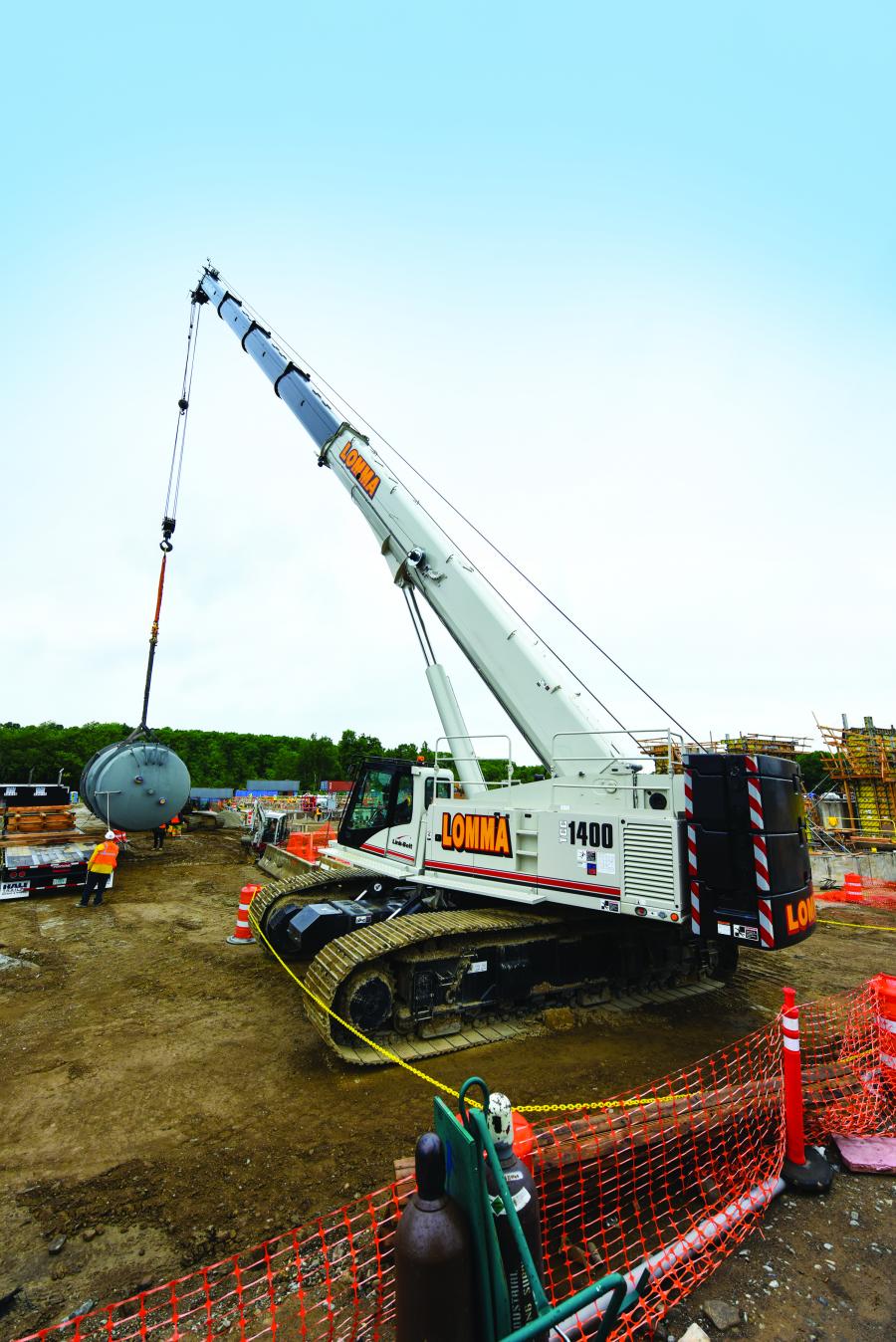Mon February 10, 2020
Link Belt
A joint venture with Skanska, Burns & McDonnell and ECCO Enterprises is building CPV Valley Energy Center in Lower Hudson Valley, 65 mi. northwest of New York City. The combined cycle power facility will have a gross capacity of 675 mW, producing enough electricity for 600,000 homes and more than 400 commercial entities.
Green technology is being used with two Siemens F Class combustion turbine generator sets and one steam turbine for the nearly $1 billion project. The steam turbine generator will have natural gas-fired duct burners for additional electrical production during peak periods of energy demand. ACC (air cooled condenser) piping up to 24 ft. (7.3 m) in diameter and up to 150 ft. (45.7 m) long will be used for the combined cycle power facility.

Two 140-ton (127 t) TCC-1400s and one 110-ton (99.8 t) TCC-1100 telescopic crawler cranes unload, sort and assemble the piping shells at various locations.
All Link-Belt TCCs have complete 360-degree pick-n-carry charts to easily maneuver around the job site. While relocating ACC pipe sections, the TCC-1400 proved itself when having to work its way between concrete pipe footing pedestals. Pipe sections weighing between 28,000 and 48,000 lbs. (12,700 and 21,772 kg) were lifted at a radius up to 40 ft. (12.1 m) with 84.5 ft. (25.8 m) of boom.
Joe Uva is Skanska's regional crane director and was responsible for bringing in the Link-Belt TCCs for the project.
"I do all the specs for a project. Once I understand a project team's needs, I bring in the cranes available to supply those needs. Many times, team members don't realize the advantages and benefits of a telescopic crawler crane. From past experience, I know what I can get out of cranes like this when I have low angle work, as I have on this job, beneath unfinished construction or buildings. The [TCC] crane's mobility, and the amount of time that the company saves in moving in and setting up, and their low boom angle chart really brings a lot to the table. So I need to go with these machines," Uva said.
Link-Belt telescopic crawler cranes also sit wider on outriggers than the competition for solid self-assembly. Both the TCC-1100 and TCC-1400 have tapered axles instead of traditional stub axles which allow for easier side frame install.
"We used the TCC-1100 for a project under the Brooklyn Bridge. We took it off the trailer, set it up, and had it working within an hour. I did my drilled shafts and got out of there in minimal time. With the other TCC-1400, it's virtually the same process, it just needs more counterweight, so it just takes a little more to set it up, but that's it," he continued.
When not assisting the TCC-1400 dedicated to lifting ACC pipe, the TCC-1100 travels to the far end of the complex to offload skids and transport trailers loaded by the second TCC-1400 at an offsite laydown yard. The skids include large duct shells that weigh as much as 42,000 lbs. (19,050 kg).
"The TCC cranes are versatile and easy to move around the job. You cut down on set up time and the need for extra men to move around outrigger pads. The operator is not worried about telescoping out, and setting up in the right place. He just moves quickly to the right position. There is a tremendous amount of savings by using these machines," said Uva.
For more information, visit www.linkbelt.com.
 Cranes Equipment
Cranes Equipment Articles
Articles Email Updates
Email Updates Sell Your Machines
Sell Your Machines

 Cranes Equipment
Cranes Equipment Cranes Dealers
Cranes Dealers Cranes Articles
Cranes Articles Email Updates
Email Updates Sell Your Machines
Sell Your Machines